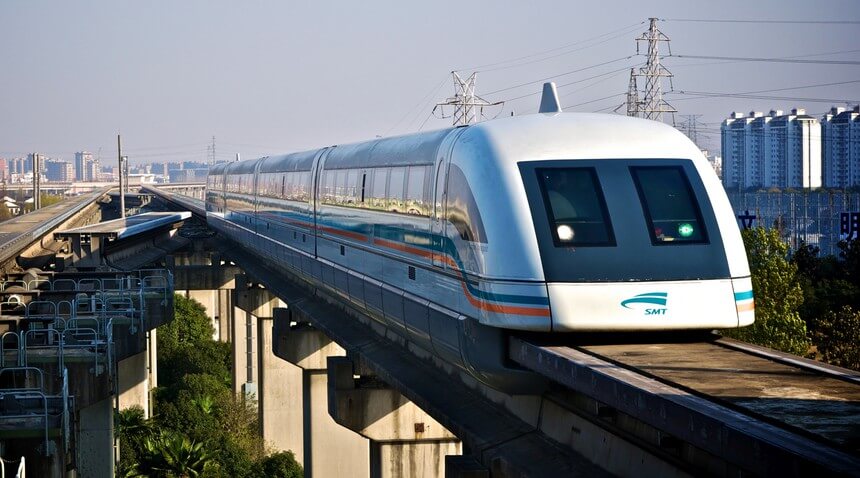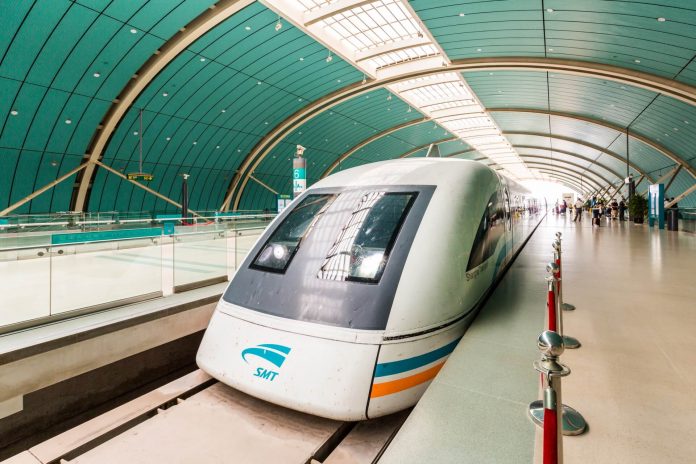Launched in 2004, the Shanghai Transrapid is the only high-speed maglev to date, yet it’s the fastest commercially operated train in the world.
As the track is only 30.5 km (18.95 mi) long, the travel time is a mere 7 minutes. The German technology comes from Transrapid which developed the high-speed monorail train using magnetic levitation. This record is not expected to last long, as SCMaglev is to be introduced in 2027 on the Tokyo – Nagoya line, and the Chinese high-speed maglev system is well under development as well.
Construction
The system was built by Transrapid International, a German company who teamed-up with Shanghai authorities to create this, the world’s first commercial maglev train line. Work began in 2001 and the first passengers took their seats in 2004.
The total cost of the venture was $1.58 billion which sounds like a lot but, according to the Shanghai Transport Centre, the cost per kilometer of track was about half of what it would have cost to construct a traditional metro system.

Data
The Shanghai Maglev covers 30km between Pudong Airport and the Lujiazui financial district in seven minutes reaching top speeds of 431kmph. However the trains are capable of going much faster. During a series of tests carried out in 2003, a five-carriage Shanghai Maglev train recorded a top speed of 501kmph (311 mph).
To date, the Shanghai Maglev has carried 1.5 million passengers and covered a commercial distance of over 1 million kilometers.
Advantages
The Shanghai Maglev system is currently rated as one of the safest transportation systems in the world with over 300 safety assessments carried out and passed since its formation. Safety is further overseen by an independent body that closely monitors all systems. Since opening in 2004 there has only been one mishap, in 2006, where a malfunctioning battery started a small fire. No-one was hurt.
The Shanghai Maglev is quieter than normal trains, more economical with energy and does not pollute the environment. Some critics have claimed that it emits harmful radiation but tests have proven such claims false. In fact, the Shanghai Maglev emits less radiation than a single hairdryer.
The trains float above the tracks which means there is far less wear and tear on the lines so the maglev requires far less maintenance than normal trains.



















































